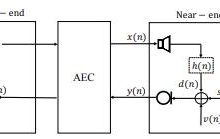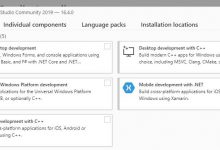「众所周知,视频可以 P」,今天我们来学习怎么给视频添加滤镜。
在 iOS 中,对视频进行图像处理一般有两种方式: GPUImage 和 AVFoundation 。
一、GPUImage
在之前的文章中,我们对 GPUImage 已经有了一定的了解。之前一般使用它对摄像头采集的图像数据进行处理,然而,它对本地视频的处理也一样方便。
直接看代码:
// movieNSString *path = [[NSBundle mainBundle] pathForResource:@\"sample\" ofType:@\"mp4\"];NSURL *url = [NSURL fileURLWithPath:path];GPUImageMovie *movie = [[GPUImageMovie alloc] initWithURL:url];// filterGPUImageSmoothToonFilter *filter = [[GPUImageSmoothToonFilter alloc] init];// viewGPUImageView *imageView = [[GPUImageView alloc] initWithFrame:CGRectMake(0, 80, self.view.frame.size.width, self.view.frame.size.width)];[self.view addSubview:imageView];// chain[movie addTarget:filter];[filter addTarget:imageView];// processing[movie startProcessing];
核心代码一共就几行。 GPUImageMovie 负责视频文件的读取, GPUImageSmoothToonFilter 负责滤镜效果处理, GPUImageView 负责最终图像的展示。
通过滤镜链将三者串起来,然后调用 GPUImageMovie 的 startProcessing 方法开始处理。
虽然 GPUImage 在使用上简单,但是存在着 没有声音 、 在非主线程调用 UI 、 导出文件麻烦 、 无法进行播放控制 等诸多缺点。
小结:GPUImage 虽然使用很方便,但是存在诸多缺点,不满足生产环境需要。
二、AVFoundation
1、 AVPlayer 的使用
首先来复习一下 AVPlayer 最简单的使用方式:
NSURL *url = [[NSBundle mainBundle] URLForResource:@\"sample\" withExtension:@\"mp4\"];AVURLAsset *asset = [AVURLAsset assetWithURL:url];AVPlayerItem *playerItem = [[AVPlayerItem alloc] initWithAsset:asset];AVPlayer *player = [[AVPlayer alloc] initWithPlayerItem:playerItem];AVPlayerLayer *playerLayer = [AVPlayerLayer playerLayerWithPlayer:player];
第一步先构建 AVPlayerItem ,然后通过 AVPlayerItem 创建 AVPlayer ,最后通过 AVPlayer 创建 AVPlayerLayer 。
AVPlayerLayer 是 CALayer 的子类,可以把它添加到任意的 Layer 上。当 AVPlayer 调用 play 方法时, AVPlayerLayer 上就能将图像渲染出来。
AVPlayer 的使用方式十分简单。但是,按照上面的方式,最终只能在 AVPlayerLayer 上渲染出最原始的图像。如果我们希望在播放的同时,对原始图像进行处理,则需要修改 AVPlayer 的渲染过程。
2、修改 AVPlayer 的渲染过程
修改 AVPlayer 的渲染过程,要从 AVPlayerItem 下手,主要分为 四步 :
第一步:自定义 AVVideoCompositing 类
AVVideoCompositing 是一个协议,我们的自定义类要实现这个协议。在这个自定义类中,可以获取到每一帧的原始图像,进行处理并输出。
在这个协议中,最关键是 startVideoCompositionRequest 方法的实现:
// CustomVideoCompositing.m- (void)startVideoCompositionRequest:(AVAsynchronousVideoCompositionRequest *)asyncVideoCompositionRequest {dispatch_async(self.renderingQueue, ^{@autoreleasepool {if (self.shouldCancelAllRequests) {[asyncVideoCompositionRequest finishCancelledRequest];} else {CVPixelBufferRef resultPixels = [self newRenderdPixelBufferForRequest:asyncVideoCompositionRequest];if (resultPixels) {[asyncVideoCompositionRequest finishWithComposedVideoFrame:resultPixels];CVPixelBufferRelease(resultPixels);} else {// print error}}}});}
通过 newRenderdPixelBufferForRequest 方法从 AVAsynchronousVideoCompositionRequest 中获取到处理后的 CVPixelBufferRef 后输出,看下这个方法的实现:
// CustomVideoCompositing.m- (CVPixelBufferRef)newRenderdPixelBufferForRequest:(AVAsynchronousVideoCompositionRequest *)request {CustomVideoCompositionInstruction *videoCompositionInstruction = (CustomVideoCompositionInstruction *)request.videoCompositionInstruction;NSArray<AVVideoCompositionLayerInstruction *> *layerInstructions = videoCompositionInstruction.layerInstructions;CMPersistentTrackID trackID = layerInstructions.firstObject.trackID;CVPixelBufferRef sourcePixelBuffer = [request sourceFrameByTrackID:trackID];CVPixelBufferRef resultPixelBuffer = [videoCompositionInstruction applyPixelBuffer:sourcePixelBuffer];if (!resultPixelBuffer) {CVPixelBufferRef emptyPixelBuffer = [self createEmptyPixelBuffer];return emptyPixelBuffer;} else {return resultPixelBuffer;}}
在这个方法中,我们通过 trackID 从 AVAsynchronousVideoCompositionRequest 中获取到 sourcePixelBuffer ,也就是当前帧的原始图像。
然后调用 videoCompositionInstruction 的 applyPixelBuffer 方法,将 sourcePixelBuffer 作为输入,得到处理后的结果 resultPixelBuffer 。也就是说,我们对图像的处理操作,都发生在 applyPixelBuffer 方法中。
在 newRenderdPixelBufferForRequest 这个方法中,我们已经拿到了当前帧的原始图像 sourcePixelBuffer ,其实也可以直接在这个方法中对图像进行处理。
那为什么还需要把处理操作放在 CustomVideoCompositionInstruction 中呢?
因为在实际渲染的时候,自定义 AVVideoCompositing 类的实例创建是系统内部完成的。也就是说,我们访问不到最终的 AVVideoCompositing 对象。所以无法进行一些渲染参数的动态修改。而从 AVAsynchronousVideoCompositionRequest 中,可以获取到 AVVideoCompositionInstruction 对象,所以我们需要自定义 AVVideoCompositionInstruction ,这样就可以间接地通过修改 AVVideoCompositionInstruction 的属性,来动态修改渲染参数。
第二步:自定义 AVVideoCompositionInstruction
这个类的关键点是 applyPixelBuffer 方法的实现:
// CustomVideoCompositionInstruction.m- (CVPixelBufferRef)applyPixelBuffer:(CVPixelBufferRef)pixelBuffer {self.filter.pixelBuffer = pixelBuffer;CVPixelBufferRef outputPixelBuffer = self.filter.outputPixelBuffer;CVPixelBufferRetain(outputPixelBuffer);return outputPixelBuffer;}
这里把 OpenGL ES 的处理细节都封装到了 filter 中。这个类的实现细节可以先忽略,只需要知道它接受 原始的 CVPixelBufferRef ,返回 处理后的 CVPixelBufferRef 。
第三步:构建 AVMutableVideoComposition
构建的代码如下:
self.videoComposition = [self createVideoCompositionWithAsset:self.asset];self.videoComposition.customVideoCompositorClass = [CustomVideoCompositing class];- (AVMutableVideoComposition *)createVideoCompositionWithAsset:(AVAsset *)asset {AVMutableVideoComposition *videoComposition = [AVMutableVideoComposition videoCompositionWithPropertiesOfAsset:asset];NSArray *instructions = videoComposition.instructions;NSMutableArray *newInstructions = [NSMutableArray array];for (AVVideoCompositionInstruction *instruction in instructions) {NSArray *layerInstructions = instruction.layerInstructions;// TrackIDsNSMutableArray *trackIDs = [NSMutableArray array];for (AVVideoCompositionLayerInstruction *layerInstruction in layerInstructions) {[trackIDs addObject:@(layerInstruction.trackID)];}CustomVideoCompositionInstruction *newInstruction = [[CustomVideoCompositionInstruction alloc] initWithSourceTrackIDs:trackIDs timeRange:instruction.timeRange];newInstruction.layerInstructions = instruction.layerInstructions;[newInstructions addObject:newInstruction];}videoComposition.instructions = newInstructions;return videoComposition;}
构建 AVMutableVideoComposition 的过程 主要做两件事情 。
第一件事情,把 videoComposition 的 customVideoCompositorClass 属性,设置为我们自定义的 CustomVideoCompositing 。
第二件事情,首先通过系统提供的方法 videoCompositionWithPropertiesOfAsset 构建出 AVMutableVideoComposition 对象,然后将它的 instructions 属性修改为自定义的 CustomVideoCompositionInstruction 类型。(就像「第一步」提到的,后续可以在 CustomVideoCompositing 中,拿到 CustomVideoCompositionInstruction 对象。)
注意:这里可以把 CustomVideoCompositionInstruction 保存下来,然后通过修改它的属性,去修改渲染参数。
第四步:构建 AVPlayerItem
有了 AVMutableVideoComposition 之后,后面的事情就简单多了。
只需要在创建 AVPlayerItem 的时候,多赋值一个 videoComposition 属性。
self.playerItem = [[AVPlayerItem alloc] initWithAsset:self.asset];self.playerItem.videoComposition = self.videoComposition;
这样,整条链路就串起来了, AVPlayer 在播放时,就能在 CustomVideoCompositionInstruction 的 applyPixelBuffer 方法中接收到 原始图像的 CVPixelBufferRef 。
3、应用滤镜效果
这一步要做的事情是: 在 CVPixelBufferRef 上添加滤镜效果,并输出处理后的 CVPixelBufferRef 。
要做到这件事情,有很多种方式。包括但不限定于: OpenGL ES 、 CIImage 、 Metal 、 GPUImage 等。
为了同样使用前面用到的 GPUImageSmoothToonFilter ,这里介绍一下 GPUImage 的方式。
关键代码如下:
- (CVPixelBufferRef)renderByGPUImage:(CVPixelBufferRef)pixelBuffer {CVPixelBufferRetain(pixelBuffer);__block CVPixelBufferRef output = nil;runSynchronouslyOnVideoProcessingQueue(^{[GPUImageContext useImageProcessingContext];// (1)GLuint textureID = [self.pixelBufferHelper convertYUVPixelBufferToTexture:pixelBuffer];CGSize size = CGSizeMake(CVPixelBufferGetWidth(pixelBuffer),CVPixelBufferGetHeight(pixelBuffer));[GPUImageContext setActiveShaderProgram:nil];// (2)GPUImageTextureInput *textureInput = [[GPUImageTextureInput alloc] initWithTexture:textureID size:size];GPUImageSmoothToonFilter *filter = [[GPUImageSmoothToonFilter alloc] init];[textureInput addTarget:filter];GPUImageTextureOutput *textureOutput = [[GPUImageTextureOutput alloc] init];[filter addTarget:textureOutput];[textureInput processTextureWithFrameTime:kCMTimeZero];// (3)output = [self.pixelBufferHelper convertTextureToPixelBuffer:textureOutput.texturetextureSize:size];[textureOutput doneWithTexture];glDeleteTextures(1, &textureID);});CVPixelBufferRelease(pixelBuffer);return output;}
(1)一开始读入的视频帧是 YUV 格式的,首先把 YUV 格式的 CVPixelBufferRef 转成 OpenGL 纹理。
(2)通过 GPUImageTextureInput 来构造滤镜链起点, GPUImageSmoothToonFilter 来添加滤镜效果, GPUImageTextureOutput 来构造滤镜链终点,最终也是输出 OpenGL 纹理。
(3)将处理后的 OpenGL 纹理转化为 CVPixelBufferRef 。
另外,由于 CIImage 使用简单,也顺便提一下用法。
关键代码如下:
- (CVPixelBufferRef)renderByCIImage:(CVPixelBufferRef)pixelBuffer {CVPixelBufferRetain(pixelBuffer);CGSize size = CGSizeMake(CVPixelBufferGetWidth(pixelBuffer),CVPixelBufferGetHeight(pixelBuffer));// (1)CIImage *image = [[CIImage alloc] initWithCVPixelBuffer:pixelBuffer];// (2)CIImage *filterImage = [CIImage imageWithColor:[CIColor colorWithRed:255.0 / 255green:245.0 / 255blue:215.0 / 255alpha:0.1]];// (3)image = [filterImage imageByCompositingOverImage:image];// (4)CVPixelBufferRef output = [self.pixelBufferHelper createPixelBufferWithSize:size];[self.context render:image toCVPixelBuffer:output];CVPixelBufferRelease(pixelBuffer);return output;}
(1)将 CVPixelBufferRef 转化为 CIImage 。
(2)创建一个带透明度的 CIImage 。
(3)用系统方法将 CIImage 进行叠加。
(4)将叠加后的 CIImage 转化为 CVPixelBufferRef 。
4、导出处理后的视频
视频处理完成后,最终都希望能导出并保存。
导出的代码也很简单:
self.exportSession = [[AVAssetExportSession alloc] initWithAsset:self.asset presetName:AVAssetExportPresetHighestQuality];self.exportSession.videoComposition = self.videoComposition;self.exportSession.outputFileType = AVFileTypeMPEG4;self.exportSession.outputURL = [NSURL fileURLWithPath:self.exportPath];[self.exportSession exportAsynchronouslyWithCompletionHandler:^{// 保存到相册// ...}];
这里关键的地方在于将 videoComposition 设置为前面构造的 AVMutableVideoComposition 对象,然后设置好输出路径和文件格式后就可以开始导出。导出成功后,可以将视频文件转存到相册中。
小结: AVFoundation 虽然使用比较繁琐,但是功能强大,可以很方便地导出视频处理的结果,是用来做视频处理的不二之选。
源码
请到 GitHub 上查看完整代码。
到此这篇关于在iOS中给视频添加滤镜的方法示例的文章就介绍到这了,更多相关iOS 视频添加滤镜内容请搜索脚本之家以前的文章或继续浏览下面的相关文章希望大家以后多多支持脚本之家!
您可能感兴趣的文章:
- iOS图片压缩、滤镜、剪切及渲染等详解
- iOS给图片添加滤镜&使用openGLES动态渲染图片详解及实例
 爱站程序员基地
爱站程序员基地


